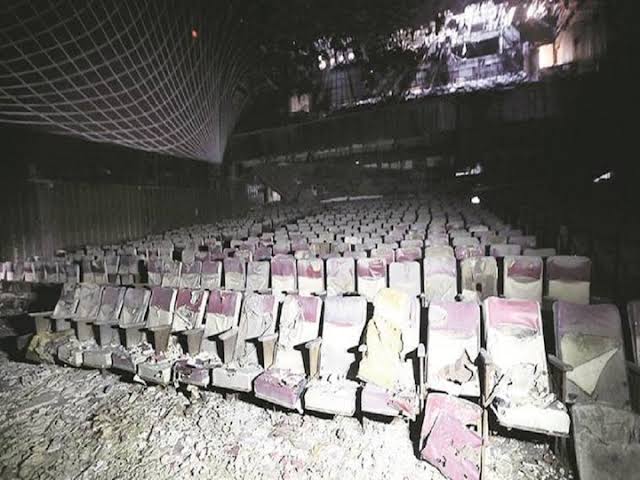Introduction:
Uphaar Cinema Hall, located in South Delhi’s Green Park, was a popular entertainment venue known for its movie screenings. Owned jointly by the Ansal Brothers, the cinema complex consisted of a 750-seater auditorium and a 250-seater balcony. However, tragedy struck on June 13, 1997, when a fire broke out in the building’s basement, leading to one of the deadliest cinema disasters in India’s history.
Description of the Event:
The fire originated from a faulty transformer in the cinema’s ground floor, leading to dense smoke engulfing the building. The absence of proper fire safety measures and emergency exits exacerbated the situation. As the fire spread, panic ensued among the patrons, trapping them inside the cinema halls. The lack of emergency lighting and well-marked exits further hindered evacuation efforts.
Impact/Loss:
The fire claimed the lives of 59 people, including 23 children, while injuring over 100 others. Many patrons succumbed to asphyxiation and stampede as they attempted to escape the smoke-filled building. The incident left families devastated and the nation mourning the loss of innocent lives.
Response/Rehabilitation:
Emergency services, including fire tenders and medical personnel, rushed to the scene to rescue survivors and provide medical aid. However, the lack of proper firefighting equipment and coordination hindered rescue efforts. Volunteer organizations and bystanders played a crucial role in assisting with evacuation and providing immediate assistance to the injured.
Aftermath:
Legal proceedings ensued, with the cinema owners facing charges of negligence and violation of safety regulations. The incident prompted the formation of the Association of the Victims of Uphaar Tragedy (AVUT), which advocated for justice for the victims and pushed for improved safety standards in public venues. Despite efforts for compensation and justice, the building remains sealed, serving as a grim reminder of the tragedy.
Lessons Learned:
The Uphaar Cinema fire tragedy highlighted the critical need for robust fire safety measures and emergency preparedness in public spaces. It underscored the importance of strict enforcement of building codes and regular inspections to ensure compliance with safety regulations. The incident served as a wake-up call for authorities to prioritize public safety and implement measures to prevent similar disasters in the future.
Implications on Policy and Practice:
In response to the tragedy, the Delhi High Court and Supreme Court of India issued guidelines and recommendations for enhancing fire safety in cinema halls and public venues. These include mandatory evacuation plans, staff training, regular inspections, and public awareness campaigns. The incident prompted policy reforms aimed at preventing such disasters and ensuring the safety of patrons in public spaces.
Conclusion:
The Uphaar Cinema fire tragedy remains a stark reminder of the devastating consequences of negligence and inadequate safety measures. It underscores the collective responsibility of stakeholders, including authorities, venue owners, and citizens, in ensuring public safety. While the incident resulted in legal proceedings and policy reforms, its lasting impact serves as a solemn tribute to the lives lost and a catalyst for continuous improvement in disaster preparedness and response efforts.


